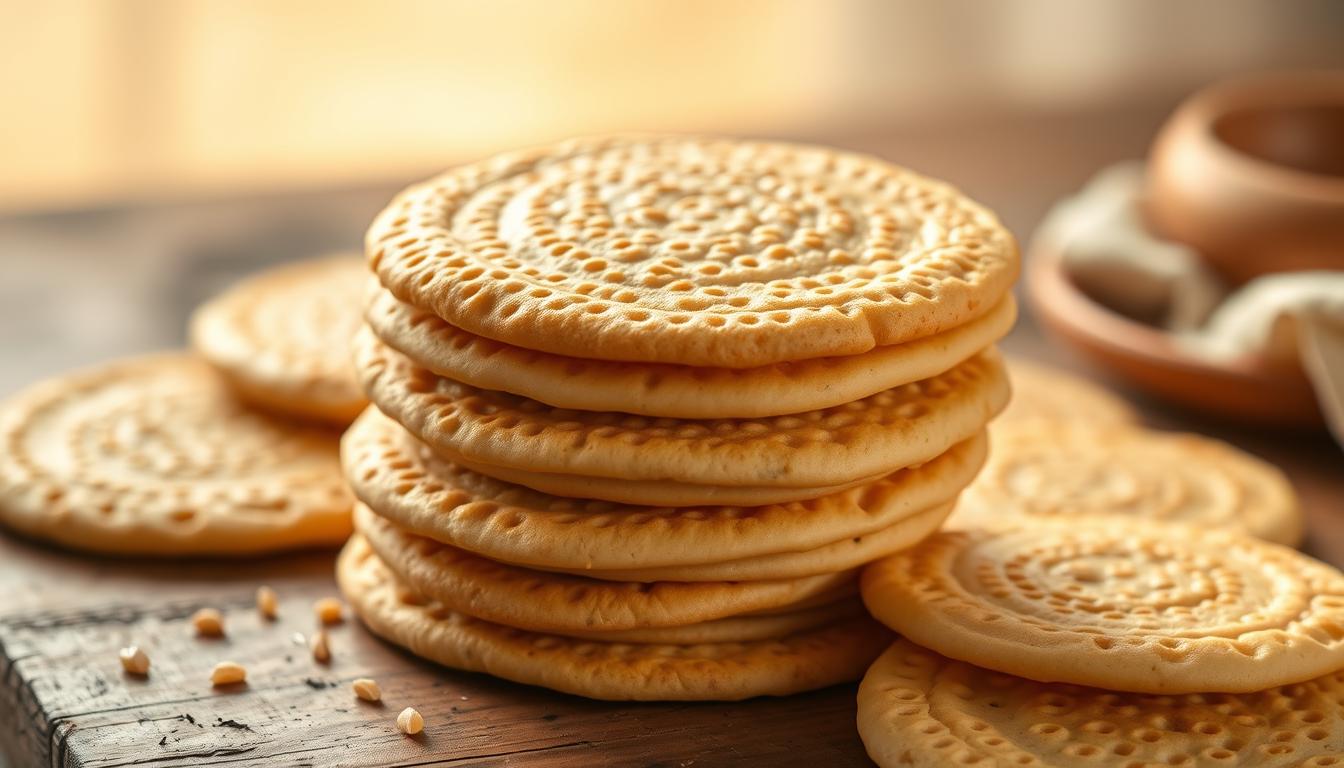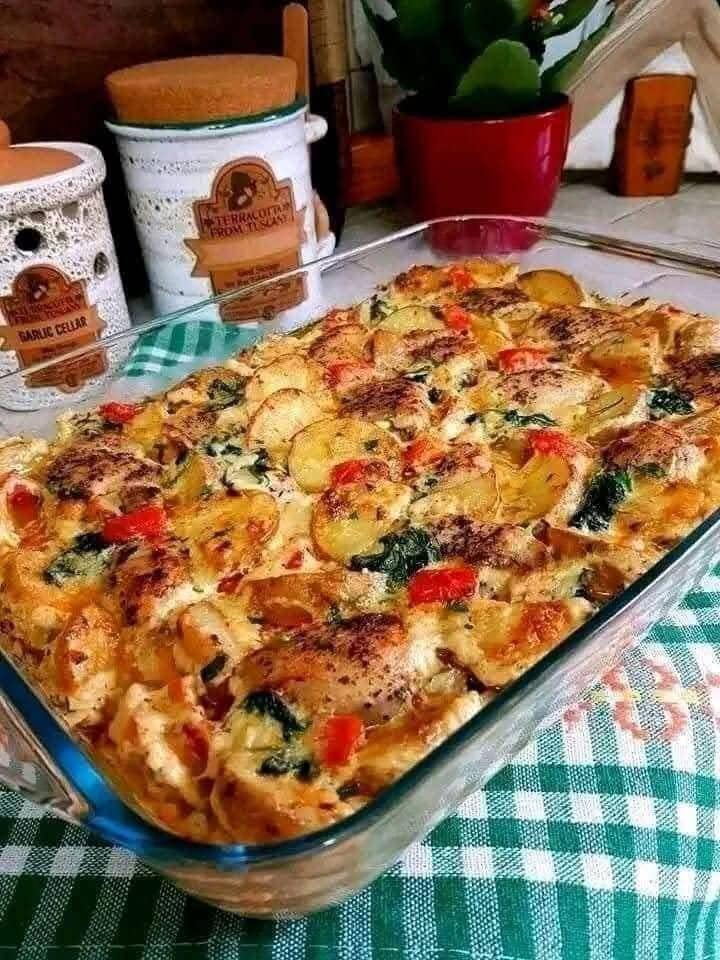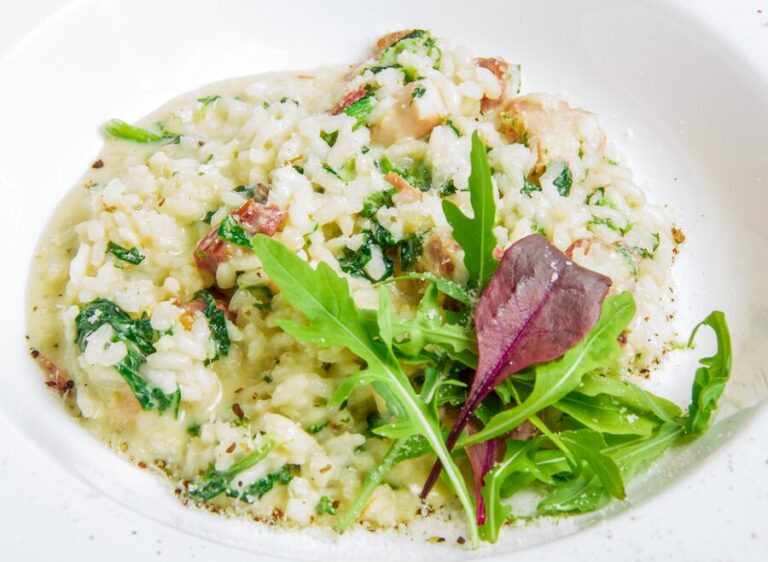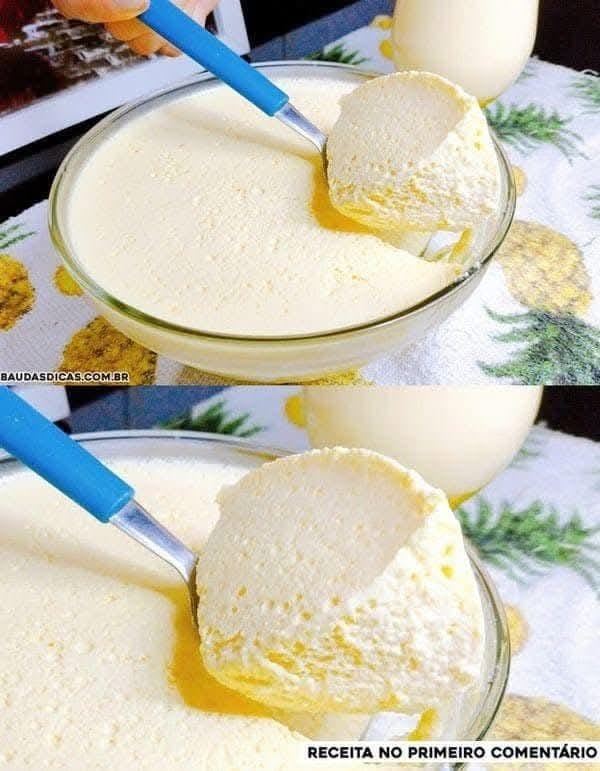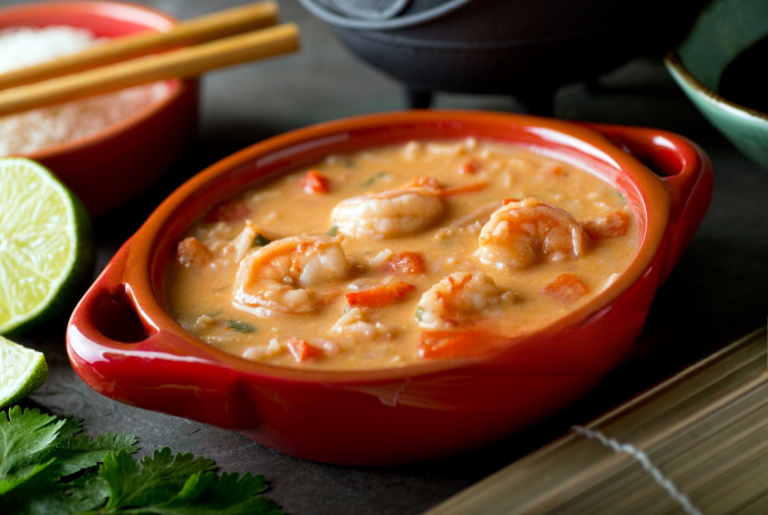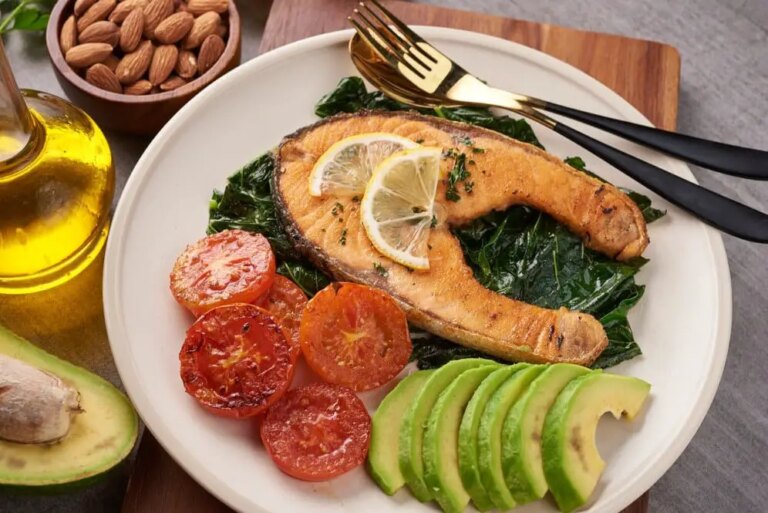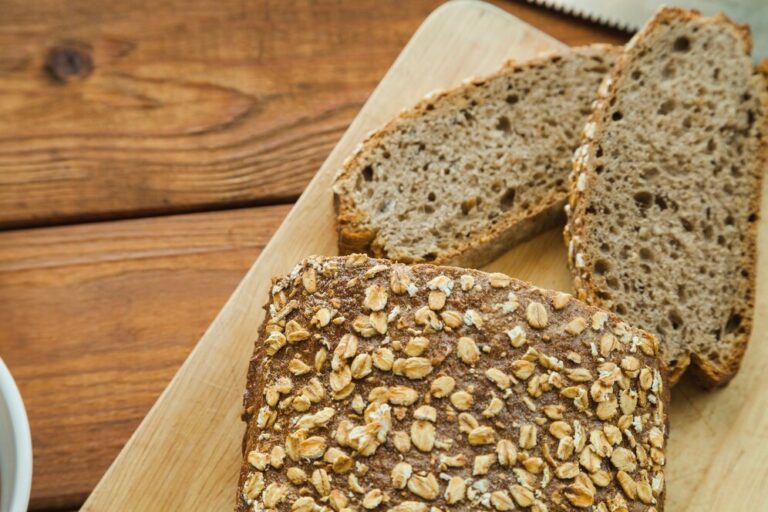Beghrir: Moroccan Pancakes with a Thousand Holes
Discover the Delight of Beghrir, a traditional North African dish that has captured the hearts of many worldwide. Beghrir, also known as Moroccan pancakes with a thousand holes, is renowned for its unique texture and flavor.
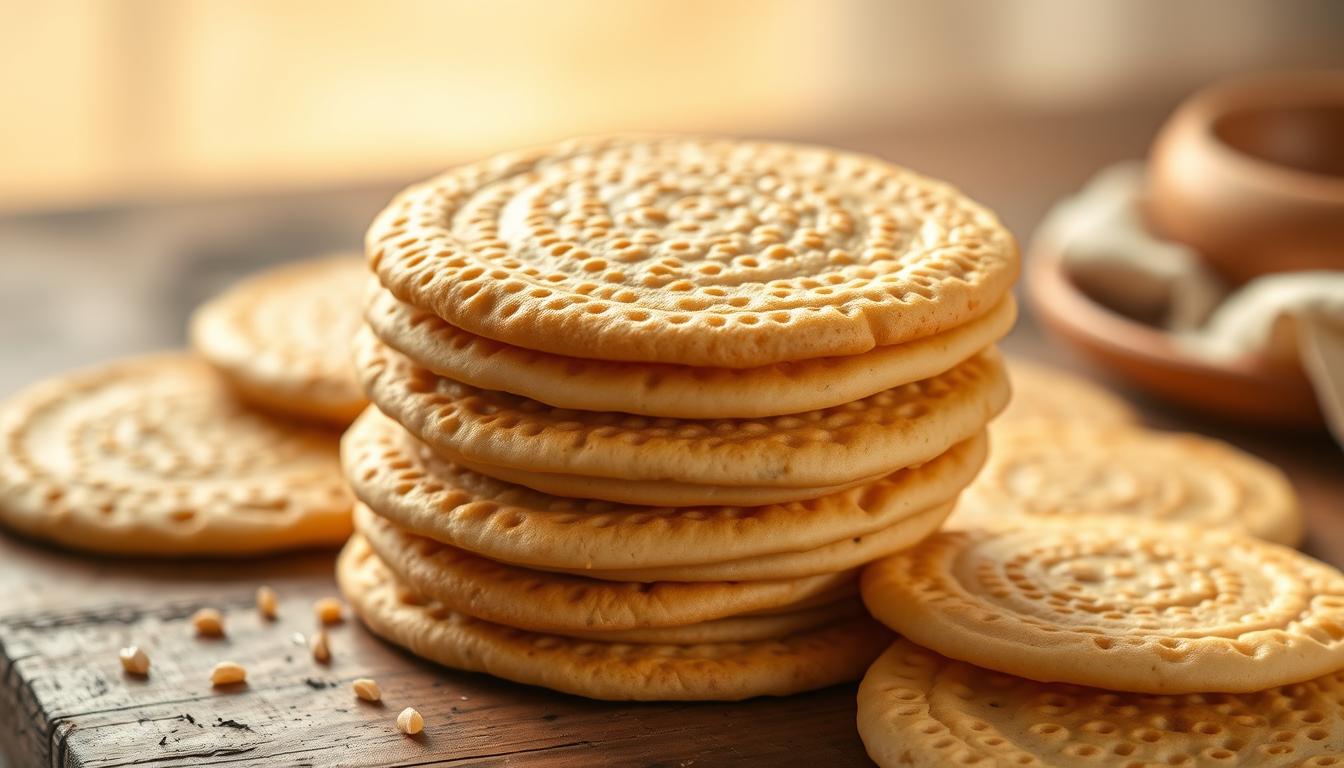
Beghrir is made from semolina flour, giving it a distinct taste and texture that sets it apart from other semolina pancakes. This dish is not just a culinary delight but also holds cultural significance in North Africa, particularly in Morocco.
The history and cultural importance of Beghrir are as rich as its flavor, making it a fascinating topic to explore. As we delve into the world of Beghrir, we will uncover its preparation methods, variations, and the role it plays in Moroccan cuisine.
Key Takeaways
- Beghrir is a traditional North African dish known for its unique texture and flavor.
- It is made from semolina flour, which gives it a distinct taste.
- Beghrir holds significant cultural importance in Morocco and North Africa.
- The dish is also known as Moroccan pancakes with a thousand holes.
- Beghrir’s preparation and variations are worth exploring.
The Unique Charm of Beghrir in Moroccan Cuisine
The charm of Beghrir lies not just in its taste, but in the experience it offers, steeped in tradition. This Moroccan pancake, characterized by its thousand holes, is a staple in North African cuisine and plays a significant role in Moroccan culture.
What Makes Beghrir Special
Beghrir is special due to its unique texture and preparation method. The batter, made from semolina and yeast, undergoes a fermentation process that gives the pancake its distinctive spongy texture and numerous holes. This unique texture is not just aesthetically pleasing but also enhances the overall dining experience. As one Moroccan proverb goes, “Food is not just eating; it’s a bond between people,” and Beghrir embodies this spirit perfectly.
Cultural Significance in Morocco
In Morocco, Beghrir is more than just a meal; it’s a cultural symbol. It’s often served during special occasions and gatherings, fostering a sense of community and togetherness. The preparation and sharing of Beghrir are considered acts of love and hospitality. As Chef Fatima, a renowned Moroccan chef, once said, “Beghrir brings people together; it’s a dish that warms the heart and soul.”
The cultural significance of Beghrir is deeply rooted in Moroccan traditions. It’s a dish that is often associated with warmth, hospitality, and generosity. In many Moroccan households, Beghrir is served to guests as a sign of respect and welcome.
History and Origins of Beghrir or Pancakes with a Thousand Holes
Beghrir, a staple in Moroccan cuisine, has its roots deeply embedded in the ancient culinary traditions of North Africa. This spongy pancake, characterized by its thousand holes, has been a beloved dish for centuries.
Ancient Roots in North African Cuisine
The origins of Beghrir can be traced back to the ancient culinary practices of North Africa, where similar dishes were consumed as early as the time of the Berbers. The use of semolina flour, a key ingredient in Beghrir, was prevalent in the region due to the influence of Mediterranean trade.
The evolution of Beghrir was also influenced by the Islamic Golden Age, during which culinary practices were refined and new ingredients were introduced. The dish became an integral part of North African cuisine, particularly in Morocco.
Evolution Through Centuries
Over the centuries, Beghrir has undergone significant changes, influenced by various cultural and culinary traditions. The introduction of new ingredients and cooking techniques, especially during the Islamic and French colonial periods, contributed to its evolution.
| Period | Influence on Beghrir |
|---|---|
| Ancient Berber | Use of local grains like semolina |
| Islamic Golden Age | Refinement of culinary practices and introduction of new ingredients |
| French Colonial | Influence on cooking techniques and ingredient selection |
Today, Beghrir remains a cherished dish in Morocco and other parts of North Africa, symbolizing the rich culinary heritage of the region.
The Science Behind the Thousand Holes
The signature thousand holes in Beghrir are not just a visual delight; they are a result of a fascinating scientific process. This process involves the fermentation of the batter, which is crucial for creating the characteristic texture and appearance of Beghrir.
Fermentation Process Explained
The fermentation process in Beghrir batter is primarily driven by yeast, which consumes the sugars present in the semolina and produces carbon dioxide gas as a byproduct. This reaction is what gives Beghrir its spongy texture and honeycomb appearance.
Why the Bubbles Form
As the carbon dioxide is produced, it gets trapped in the batter, forming bubbles. When the batter is cooked on a hot griddle, these bubbles expand and then burst, leaving behind the characteristic holes. The size and distribution of these holes can vary depending on factors like the yeast concentration, temperature, and cooking time.
| Factor | Effect on Bubbles |
|---|---|
| Yeast Concentration | Higher yeast concentration leads to more bubbles |
| Temperature | Optimal temperature enhances bubble formation |
| Cooking Time | Longer cooking time can lead to more holes |
Understanding the science behind Beghrir’s thousand holes not only deepens our appreciation for this traditional Moroccan dish but also helps in perfecting the recipe. By controlling factors like yeast concentration, temperature, and cooking time, one can achieve the desired texture and appearance.
Essential Ingredients for Authentic Beghrir
Authentic Beghrir is made possible by combining a few crucial ingredients in the right proportions. The quality and type of these ingredients significantly impact the final product’s texture and flavor.
Semolina: The Key Ingredient
Semolina flour is the backbone of Beghrir, providing the necessary coarseness and texture. Unlike fine wheat flour, semolina gives Beghrir its distinctive porous structure. It’s essential to use fine semolina for the best results, as it’s more refined and produces a tender pancake.
Yeast and Other Leavening Agents
Yeast plays a critical role in the fermentation process, which is responsible for the ‘thousand holes’ characteristic of Beghrir. Active dry yeast or instant yeast can be used, and the choice between them can affect the fermentation time. Some recipes also incorporate baking powder as a secondary leavening agent to enhance the rise.
Optional Flavor Enhancers
While traditional Beghrir is relatively simple, you can enhance its flavor with optional ingredients. Vanilla, orange blossom water, or a hint of cinnamon can add depth without altering the pancake’s traditional essence. These enhancers allow for personalization while maintaining the integrity of the dish.
| Ingredient | Purpose |
|---|---|
| Semolina Flour | Provides texture and structure |
| Yeast | Facilitates fermentation for ‘thousand holes’ |
| Optional Flavor Enhancers | Adds depth and personalization |
Where to Find Beghrir Ingredients in the United States
Finding the ingredients for Beghrir in the United States is more accessible than ever, thanks to a growing interest in international cuisine. For those eager to make these delicious Moroccan pancakes, there are several options to explore.
Specialty Stores and Markets
Specialty stores and markets that focus on North African or Middle Eastern products are excellent places to start your search for Beghrir ingredients. Stores like these often carry semolina, a crucial ingredient for Beghrir. You can also check with local international or gourmet grocery stores, as they may carry or be able to order the necessary ingredients for you.
| Ingredient | Typical Store | Alternative |
|---|---|---|
| Semolina | International Grocery | Gourmet Grocery |
| Yeast | Supermarket | Health Food Store |
| Spices | International Grocery | Online Retailer |
Online Shopping Options
For those who cannot find Beghrir ingredients locally, online shopping is a convenient alternative. Websites specializing in international or gourmet foods often carry a wide range of products, including semolina and other ingredients necessary for Beghrir. Online retailers like Amazon or specialty food websites can be great resources. When shopping online, be sure to check reviews and product descriptions to ensure you’re getting the right ingredients for your Beghrir recipe.
Kitchen Tools and Equipment You’ll Need
Cooking Beghrir involves more than just ingredients; it requires the right equipment. To achieve the characteristic thousand holes, you’ll need to use the appropriate kitchen tools.
Traditional vs. Modern Cooking Methods
Traditionally, Beghrir is cooked on a clay or terracotta griddle, which distributes heat evenly. Modern cooking methods often substitute this with a non-stick pan or a cast-iron skillet, which can also produce excellent results. While traditional methods offer an authentic touch, modern alternatives provide convenience and ease of use.
The Perfect Pan for Beghrir
The ideal pan for making Beghrir is one that retains heat well and has a smooth surface. A non-stick pan is highly recommended for beginners, as it prevents the pancakes from sticking and makes them easier to flip. For a more authentic experience, a cast-iron skillet can be used, as it retains heat exceptionally well.
| Pan Type | Heat Retention | Non-Stick Quality |
|---|---|---|
| Non-Stick Pan | Medium | High |
| Cast-Iron Skillet | High | Medium |
| Terracotta Griddle | High | Low |

Step-by-Step Recipe for Perfect Beghrir
Making Beghrir is an art that requires precision and patience, starting with the preparation of the batter. To create authentic Moroccan pancakes with a thousand holes, one must understand the intricacies involved in both the batter preparation and the cooking process.
Preparing the Batter
The foundation of perfect Beghrir lies in its batter. To start, combine 1 cup of fine semolina, 1 cup of all-purpose flour, 1 tablespoon of sugar, and 1 teaspoon of salt in a large mixing bowl. The dry ingredients should be well incorporated before adding the wet ingredients.
Measuring and Mixing
In a separate bowl, whisk together 1 cup of lukewarm water, 1/2 cup of lukewarm milk, and 1 large egg. Gradually add the wet ingredients to the dry ingredients, mixing until smooth. The batter should be free of lumps and have a consistency similar to thin cream.
Resting Time
Allow the batter to rest for at least 30 minutes. This resting period is crucial as it allows the semolina to absorb the liquid ingredients fully, and the yeast to start its fermentation process, which is essential for creating the characteristic holes.
Cooking Techniques for Maximum Holes
Cooking Beghrir requires a delicate balance of temperature and technique. The goal is to create as many holes as possible on the surface while cooking only one side.
Temperature Control
Heat a non-stick pan or a traditional tajine pan over medium heat. The ideal temperature is crucial; if it’s too hot, the Beghrir will cook too quickly, and if it’s too cold, it won’t cook evenly.
Pouring Methods
Pour the batter in a circular motion, starting from the center and moving outwards. This technique helps in distributing the batter evenly and encourages the formation of holes. Use a ladle to pour the right amount of batter.
Visual Cues for Doneness
Beghrir is done when its surface is covered with bubbles and the edges start to dry. It’s essential to cook it on one side only; flipping it over will result in a dense pancake. Once the surface is dry and the bubbles have popped, remove it from the heat.
By following these steps and mastering the techniques of batter preparation and cooking, you’ll be able to create delicious Beghrir with a thousand holes, just like the traditional Moroccan pancakes.
Traditional Toppings and Serving Suggestions
The versatility of Beghrir lies in its ability to be paired with numerous toppings, from classic to innovative. Whether you’re in the mood for something sweet or savory, Beghrir can be enjoyed in various ways, making it a staple in Moroccan cuisine.
Honey and Butter: The Classic Combination
The traditional way to enjoy Beghrir is with a generous helping of honey and butter. The warmth of the pancake melts the butter, which mixes with the honey to create a rich, sweet sauce that fills the thousand holes. This classic combination is a staple in Moroccan households, especially during breakfast or as a snack.
Sweet Variations
For those with a sweet tooth, Beghrir can be topped with a variety of sweet ingredients. Some popular options include jam, Nutella, or powdered sugar. You can also get creative with fresh fruits, such as strawberries or bananas, adding a natural sweetness and texture contrast.
| Sweet Toppings | Description |
|---|---|
| Honey | Classic Moroccan sweetener |
| Nutella | Chocolate-hazelnut spread |
| Fresh Fruits | Strawberries, bananas, etc. |
Savory Alternatives
Beghrir isn’t just limited to sweet toppings; it can also be enjoyed with savory ingredients. Try pairing it with cheese, ham, or even a fried egg for a hearty breakfast. The key is to experiment and find your favorite combination.
In conclusion, Beghrir’s versatility with various toppings makes it a beloved dish in Moroccan cuisine. Whether you prefer it sweet or savory, there’s a topping combination that’s sure to delight.
Pairing Beghrir with Moroccan Beverages
To fully experience Beghrir, one must try it with the traditional Moroccan beverages that complement its unique flavor and texture.
Beghrir, with its thousand holes, is designed to soak up the delicious flavors of Moroccan drinks, making the dining experience even more enjoyable.
Mint Tea: The Perfect Companion
Mint tea is an integral part of Moroccan culture and is often served with Beghrir. The refreshing taste of mint complements the slightly sweet flavor of the pancakes, creating a perfect balance.

Other Traditional Drink Pairings
Apart from mint tea, Beghrir can be paired with other traditional Moroccan beverages like salep (a hot milk drink) or fresh orange juice. These drinks offer a variety of flavors that can be enjoyed with Beghrir.
| Beverage | Description | Pairing Tip |
|---|---|---|
| Mint Tea | Refreshing green tea with fresh mint leaves | Perfect with honey and butter on Beghrir |
| Salep | Hot milk drink flavored with salep powder | Enjoy with a sprinkle of cinnamon |
| Fresh Orange Juice | Juice squeezed from fresh oranges | Ideal for a lighter breakfast option |
Regional Variations of Moroccan Pancakes
Across Morocco, Beghrir is prepared with unique regional flavors and techniques, showcasing the country’s rich culinary diversity.
Beghrir, or Moroccan pancakes with a thousand holes, is a staple breakfast dish that varies significantly from one region to another. These variations are influenced by local ingredients, cultural traditions, and historical trade routes.
Northern Moroccan Style
In Northern Morocco, Beghrir is often made with a slightly different batter, incorporating local ingredients such as fresh herbs and sometimes a hint of citrus. The cooking technique remains similar, but the flavor profile is distinct, reflecting the region’s Mediterranean influences.
Southern and Berber Influences
The southern regions of Morocco, particularly areas with strong Berber influences, prepare Beghrir with a heartier texture. The batter may include ingredients like dates or specific types of nuts, giving the pancakes a unique flavor and texture. This variation highlights the Berber community’s contribution to Moroccan cuisine.
| Region | Key Ingredients | Cooking Technique |
|---|---|---|
| Northern Morocco | Fresh herbs, citrus | Standard Beghrir cooking |
| Southern Morocco | Dates, nuts | Heartier batter, slightly different cooking time |
Troubleshooting: Common Mistakes and How to Avoid Them
Making Beghrir can be a delightful experience, but it’s not without its challenges. To ensure your pancakes turn out perfectly, it’s essential to address a few common issues that might arise during preparation.
Batter Consistency Issues
One of the most critical factors in making Beghrir is achieving the right batter consistency. If the batter is too thick, the pancakes will be dense and heavy. On the other hand, if it’s too thin, they might not hold their shape properly. Aim for a consistency similar to thin cream. If you’re having trouble, adjust the amount of water or semolina to get it just right.
Temperature Control Problems
Temperature control is another crucial aspect of cooking Beghrir. If the pan is too hot, the pancakes will cook too quickly on the outside before they’re fully cooked on the inside. Conversely, if it’s too cool, they might not develop those characteristic holes. Use a non-stick pan over medium heat and adjust as needed based on the first few pancakes.
Storage and Reheating Tips
Beghrir is best enjoyed fresh, but you can store leftovers in an airtight container for a day or two. To reheat, simply place them in a dry pan over low heat or toast them lightly.
“The key to maintaining their softness is gentle reheating.”
You can also drizzle with a bit of honey or butter to refresh their flavor.
Conclusion: Embracing the Delightful Tradition of Beghrir
Beghrir, or Moroccan pancakes with a thousand holes, is more than just a traditional breakfast dish; it’s a culinary experience that embodies the rich cultural heritage of North Africa. By understanding the history, ingredients, and cooking techniques behind Beghrir, you can appreciate the effort that goes into creating these delicious pancakes.
Making Beghrir at home allows you to connect with Moroccan cuisine and explore the nuances of North African cooking. With the right ingredients and a bit of practice, you can master the art of creating perfect Beghrir, complete with their characteristic thousand holes. Whether you enjoy them with honey and butter or explore other traditional toppings, Beghrir is sure to become a favorite in your kitchen.
As you continue to explore traditional Moroccan recipes, consider the significance of Beghrir in North African cuisine. Its unique charm and cultural importance make it a dish worth trying and sharing with others. So, take the first step in embracing this delightful tradition and start cooking up some Beghrir today!
FAQ
What is Beghrir?
Beghrir, also known as Moroccan pancakes with a thousand holes, is a traditional North African dish made from semolina flour and characterized by its unique texture and numerous holes.
What makes Beghrir have a thousand holes?
The thousand holes in Beghrir are created by the fermentation process, which involves yeast and other leavening agents. As the batter ferments, it produces bubbles that get trapped, resulting in the characteristic holes.
Can I make Beghrir without semolina flour?
While semolina flour is the traditional and preferred ingredient for making Beghrir, you can experiment with other types of flour. However, using semolina is crucial for achieving the authentic texture and flavor.
How do I store leftover Beghrir?
Leftover Beghrir can be stored in an airtight container at room temperature for up to a day or refrigerated for longer storage. To reheat, simply warm them on a dry pan or in the microwave.
Can I freeze Beghrir?
Yes, you can freeze Beghrir. Place them in a single layer on a baking sheet to freeze, then transfer them to a freezer-safe bag or container. To reheat, thaw at room temperature or warm them in the microwave or a dry pan.
What are some traditional toppings for Beghrir?
Traditional toppings for Beghrir include honey, butter, and a variety of sweet and savory options. You can also experiment with different toppings such as jam, Nutella, or fresh fruits.
Is Beghrir a sweet or savory dish?
Beghrir can be both sweet and savory, depending on the toppings you choose. Traditionally, it’s served with honey and butter, but you can customize it to your taste.
Can I make Beghrir without yeast?
Yeast plays a crucial role in creating the characteristic holes in Beghrir. While you can experiment with other leavening agents, using yeast is recommended for authentic results.
How long does it take to make Beghrir?
The preparation time for Beghrir includes mixing the batter, which takes about 10-15 minutes, and then letting it rest for about 30 minutes to an hour. Cooking the pancakes takes an additional 2-3 minutes per side.
What is the best pan to use for cooking Beghrir?
A non-stick pan or a traditional Moroccan pan, known as a “tajine” or “mقلة” (though not the same as a tagine cooking vessel), is ideal for cooking Beghrir. The pan should be heated evenly and greased lightly to prevent sticking.
Can I make Beghrir in advance for a large gathering?
Yes, you can make Beghrir in advance. Prepare the batter ahead of time and store it in the refrigerator overnight. Cook the pancakes just before serving, or cook them in advance and reheat as needed.

